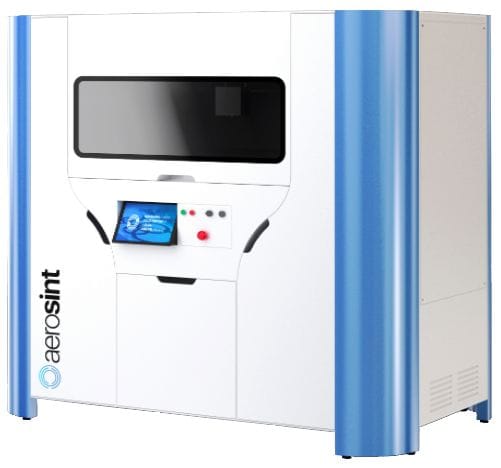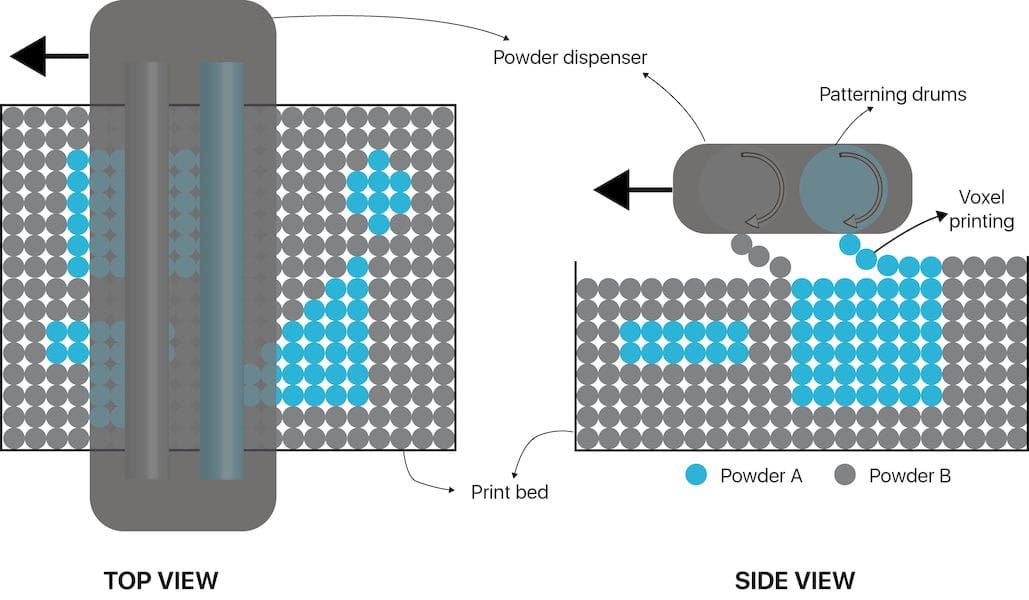
I hadn’t heard of this concept previously, but it is extremely interesting.
Most 3D SLS printers employ the powder bed / laser approach, in which a flat layer of powder is selectively blasted by a high power laser that sinters the particles it encounters, gradually solidifying a solid plastic object within the powder. Repeating this layer by layer produces an entire object.
That’s been extremely useful to many industries for years, but there is a slight limitation: only a single material is used. The powder bed is invariably a single mono-powder. Thus objects can be made only from a single material at a time.
Belgium-based Aerosint has a very different idea: use multiple powders from different materials within the same print job.
How do they do this? It’s actually ingenious. Instead of using a “bulldozer” approach to deploying a new layer of mono-powder like traditional 3D SLS printer manufacturers, they selectively deposit the powder!

Thus their concept involves selectively depositing powder and then selectively sintering the powders with lasers. This means you should be able to produce parts with multiple plastics in a single print job.
They say they can selectively deposit an entire layer, voxel by voxel, in only two seconds. That’s pretty quick.
From what I can tell, it appears they can, at the moment, handle up to two different powders at a time. While two is better than one, it isn’t many. But one can imagine future versions of the concept easily scaling to add additional powders.
There is one very interesting advantage to this approach: since unused powder is used as support material on powder bed / laser systems, the support powder can be a different material than the actual part. Thus you could, for example, 3D print a part in a very expensive powdered material, but use an inexpensive support powder. This would reduce costs as you would not need to buy a full chamber of expensive powder.
But there could be a disadvantage as well: unless the fusing is extremely precise, it’s likely there will be stray powders mixed in the non-fused portions of the build chamber when finished. This could complicate reuse of the powder as you might not be able to easily separate multiple powders afterwards. And you thought cleaning used powder was difficult – this could be much worse.
It may be that for practical purposes, you’d have to consider any unused powder as support material and not worry so much about contamination. For future multiple powder systems, I suppose you may have to use fresh sets of powder each time, but then again could use cheap support powder combined with a much smaller amount of model powder.
The good news is that these questions can now be asked, thanks to the Aerosint design.
It seems the company is quite new, having been founded in late 2016. They are still in development mode, at least according to their roadmap:

Thus they don’t seem to have any machines for sale yet, but I suspect they may attract some interest when they do.
Via Aerosint

